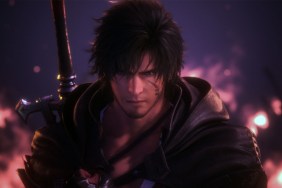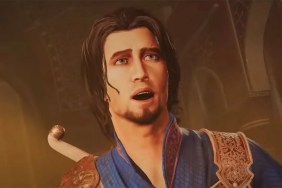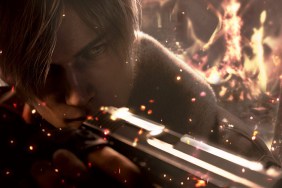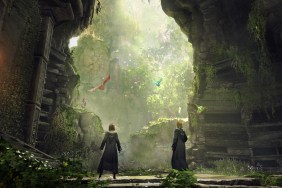Royal rights and wrongs.
Ubisoft’s Prince of Persia series has been as turbulent as the life of its namesake. It began blissfully, with a classic first entry full of jaw-dropping acrobatics and a light, enjoyable plot. Then the series plunged into darkness, literally and figuratively, in the sequel, Warrior Within. The Prince became a sarcastic ass, the game adopted dark, heavy-metal themes and the whole thing seemed to fall into a chasm of overly serious goth nonsense. We wished Ubisoft could rewind time and give that game a better second effort, but at least the fancy jumping was still intact, along with deeper combat.
Instead, Ubisoft fast-forwarded to a new adventure with Prince of Persia: The Two Thrones. While this game still bears the scars of its predecessor in more ways than one, it marks the return to a lighter, slightly less combat-intensive journey through the vertical chambers of Babylon, the Prince’s ruined home. The Two Thrones is a viscerally entertaining, hard, interesting tour through familiar chambers and gardens as marred as ever by frequent suicide, distant checkpoints and bad design decisions.
[image1]In the beginning of The Two Thrones, the Prince returns to home and throne with the beautiful Kaileena in tow, only to find it besieged by the evil Indian empire and its dastardly Vizier, who is back thanks to the Prince’s time-distorting shenanigans of the previous game. Kaileena is quickly captured and sacrificed, the Sands of Time are loosed yet again, and the Vizier becomes a weird monster worthy of a Final Fantasy game. It’s déjí vu all over again, again.
Except this time the Prince is a little late in seizing the dagger, causing him to become partially tainted by the Sands, which graft a gnarly weapon called a daggertail into his arm. The wound looks infected, pulsating with a yellowish glow, and sure enough the Prince begins to hear voices that sound an awful lot like his jerky self of the previous game. The voices, it turns out, belong to the Prince as he would be if he gave in and let the Sands consume him – a dark Prince, savage in battle and cold at heart. Not only must the Prince save his ravaged Kingdom from the Vizier-Sephiroth-Crab Demon, he must also save himself from the dark, seductive power of the Sands.
It’s a compelling idea, but the execution isn’t great. The story is narrated by Kaileena, whose penchant for stating the obvious without any trace of irony or humor will keep your eyes rolling, but not the pace of the game. Dead men tell no tales, and we wish dead women wouldn’t, either.
The Prince is just as bad. “These are the streets I once knew, but I do not know them anymore.” “Children used to play here. Where have they gone?” He’s way too sentimental and sissified. The Dark Prince, on the other hand, exists in one dimension – evil – and is only capable of snide, heartless comments. He isn’t subtle, diabolical or cool; you won’t be secretly rooting for him to win and take over the Prince’s soul as you should be.
Instead you’ll be running, jumping, flipping, wall-running, hanging, dangling and doing all the neat acrobatic stuff from the last two games, plus a little more. If you aren’t familiar with the way Prince of Persia games play, we recommend checking out the previous two reviews. Boy, we sure say that a lot these days.
This time around, he has one new move – the ability to stick his dagger into certain stone plates and hang like a monkey. From there he can jump away, vault up, or wall-run left or right. The plates don’t look organic or even like something you should be able to stab, but do add a little challenge (nailing them requires timing) as well as quite a few new navigational options.
[image2]The other ace up the Prince’s sleeve, er, emo arm-wrapping, is the ability to execute speed kills. If you approach an enemy from above or behind, the screen will distort and you’ll be able to press a button to enter Speed Kill mode. This is an interactive cut-scene where the Prince tries to stealthily assassinate his victim, and you help out by pressing a button when his dagger flashes. If you miss the timing, the enemy will turn the tables on you, knocking you to the ground and making you fight the old-fashioned way.
The speed kills are far from unique or innovative, but they fit The Two Thrones perfectly. Foremost, they allow you to potentially avoid normal combat, which is awesome because the Prince withstands axe wounds only a little better than I do. They also require great timing to pull off, so they don’t negate combat. Plus if you screw up on one, you can rewind and try again. Like I said, these kills really fit the game.
They’re also worked into the environmental puzzles. Every so often you’ll drop into a chamber full of guards and a sort of Sand fountain. One of the guards, usually a big red one, can use this fountain to call in lots of reinforcements. The trick is to use the environment to jockey yourself into a position where you can either directly assassinate the main guard or his henchman, leaving him open for a speed kill from the ground.
Unfortunately, speed kills also lead to The Two Thrones‘ most uncomfortable creases. While the enemies are smart and the Prince has a million moves at his disposal, the combat is still so difficult it will make you want to kill yourself rather than fight for fifteen minutes and lose. One good combo from a foe can knock off half your life, and that’s way too much.
Whether you let yourself die or go down fighting, chances are that you’ll restart from a point you passed eons ago. You’ll jump through a series of hoops, botch a stealth kill, die, go back to the beginning of the hoops, die, go back to the beginning of hoops, succeed, get killed by dogs a second later, and go back to the beginning for some of the most frustrating checkpoint-based design since Devil May Cry 3.
At some checkpoints, the Prince will be overcome with dark Sand power and transform into the Dark Prince, whose gameplay is marred by many of the same issues as the Prince’s, minus much of the depth or intensity. These are replaced by the daggertail, which the Dark Prince can endlessly swing over his head like a giant lasso, quickly killing any approaching enemy. For every enemy killed, the Dark Prince regains full health, making his battles so pointless and boring they didn’t even need to be in the game.
On the flipside, his acrobatic sequences are much more difficult than the Prince’s because the Dark version constantly bleeds life. If you don’t make it through a sequence fast enough, you’ll just croak, no matter how many rewinds you have. So if you get stuck on a certain part and aren’t sure how to proceed, you’ll die over and over and over, starting from the previous checkpoint repeatedly until you figure out which wall to run up or banister to leap from.
Hence, the Princes have diametrically opposed gameplay, one at ease swinging around but anxious in a fight, the other sweating bullets while swinging but snoozing through any battle. We also like the way the Dark Prince can use his daggertail to swing like a Belmont through levels, and we especially dig his slick, swinging wall-runs. We just wish the Prince’s combat was a little easier, the Dark Prince’s a little harder, and that both benefited from a friendlier checkpoint system.
When you aren’t flipping around the environments or flipping out and killing people, you’re either battling a boss or racing chariots. The boss battles are usually cool combinations of environmental puzzles and the same timing-based cut-scenes used for the speed kills. The chariot races, on the other hand, get horrifically frustrating later on as one tiny mistake will wipe you out, starting you over from the beginning of the sequence for yet more trial and error gameplay. Like everything else, these sequences will enthrall you at times and depress you at others.
[image3]Instead of the pointless races, we wish Ubisoft had spent more time on The Two Thrones‘ environments. In this third variation on the same theme, the navigational puzzles are predictable, the placement of traps as unbelievable and inorganic as ever, and it all exist in generic surroundings. We’ve seen these pillars, arches and red banners before – our familiarity with them is definitely beginning to breed contempt.
The inconsistent graphics are also a point of reckoning, no matter which system you play on. The Prince is exquisitely animated even when standing still, but the framerate can’t always keep up with his flowing hair and fancy aerial flourishes, hiccupping randomly on all three console versions. His enemies aren’t very detailed and the environments run the gamut from breathtaking vistas with tons of soft-focus effects to drab, featureless rooms and corridors, sometimes littered with the most nondescript bodies ever. Apparently, these guys died in the PSX era and have been sitting in Babylon collecting dust ever since.
Aside from the rough dialogue (which isn’t the fault of the voice actors), The Two Thrones sounds much better than Warrior Within, the annoying Godsmack soundtrack of the latter having thankfully missed the boat off the Island of Time. Right there, The Two Thrones sounds better than its predecessor, but it would sound better yet if the aural effects were a bigger part of the gameplay experience.
As uneven as it is, Prince of Persia: The Two Thrones still has its moments. Solving a particularly nasty puzzle or leaping around a room dispatching bad guys can be incredibly cinematic and entertaining. However, you’ll undoubtedly become frustrated by the design, regardless of the system. The Xbox version has shorter loading times, but aside from that minor and inexorable detail, each version is as good, and bad, as the others. We’re glad to see Ubisoft spare their Prince from becoming a pauper by ditching the dreary aesthetic, but the minor improvements along with too many familiar gripes keep this game from being king.
-
Speed kills and thrills
-
Interesting gameplay
-
Hard
-
Frustrating checkpoint system
-
Uneven graphics
-
Bad storytelling











